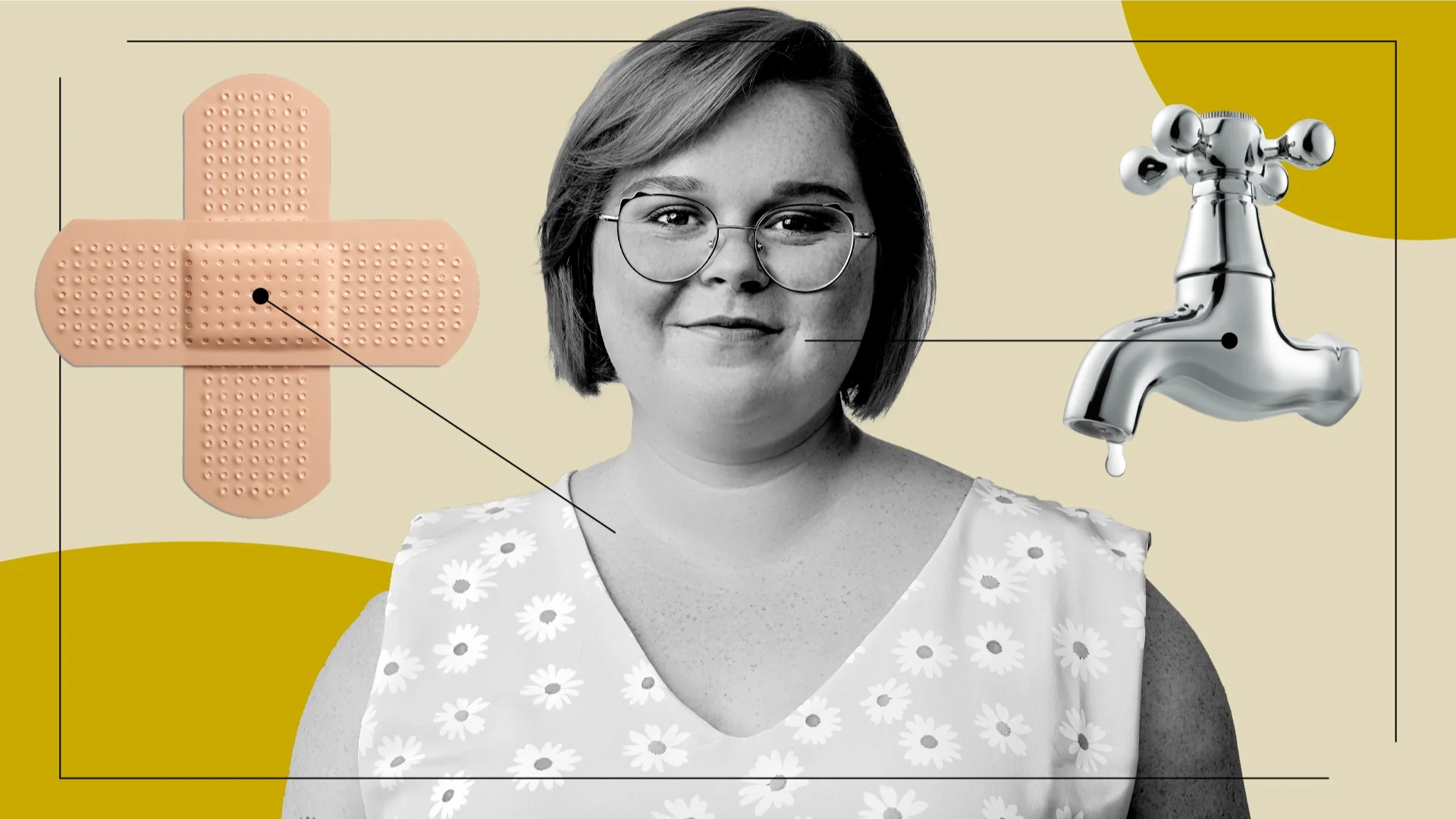Key takeaways:
Shingles is a painful rash caused by the same virus that causes chickenpox.
Acyclovir (Zovirax) is a prescription antiviral medication that can help treat shingles.
People who have taken it say it reduces the pain of shingles and helps sores heal quickly.
Shingles or “herpes zoster” is a painful rash caused by the same virus that causes chickenpox, varicella-zoster virus . When someone has had chickenpox, the virus remains in their body and can be reactivated. This is what causes shingles. Around 1 in 3 people will develop shingles during their lifetime.
Most people experience a blistering rash, tingling in the affected area, burning, and itching. They may also feel symptoms like headache, fever, and fatigue.
Prescription antiviral medications like acyclovir (Zovirax), valacyclovir (Valtrex), and famciclovir can help treat shingles. They can shorten the length and intensity of the illness, as well as prevent the spreading of the rash.
Zovirax is an antiviral used to treat herpes, shingles, and chickenpox. Below, three people describe what it’s like to take Zovirax for shingles.
Like being run over by a truck
Charles Bellomy, who is 74 and from Texas, remembers his experience with shingles all too well.
In 2016, he started experiencing stabbing pain in his abdomen and chest that kept getting worse. He woke up in the middle of the night in pain.
“The next morning, I told my wife: ‘I’ve got something serious here. I need to go to the doctor.’”
The doctor said he thought it might be shingles, and results from a medical test confirmed it 4 days later. The doctor started Charles on a course of Zovirax to help ease his symptoms.
Though he started feeling better, movement caused him unimaginable pain. When he was in the car, every bump sent pain shooting through his body.
“It felt like somebody made me eat a bunch of sharp rocks and then they ran over me with a truck,” Charles says. He remembers telling his wife that he almost would rather die than feel this way. “It was the absolute worst pain I can imagine having without passing out,” he says.
After 2 days of taking Zovirax, he began to feel better. After 10 days, he was feeling good enough to stop taking Zovirax.
“It worked within a couple of days,” he says, making the pain of shingles tolerable.

About 7 months later, Charles began to feel the familiar pain of shingles. He called his doctor right away, who referred Charles for a test. It confirmed he had shingles again. He was able to receive another prescription for Zovirax and found relief.
Painful sores during pregnancy
Nicole Northcutt was 27 years old and 37 weeks pregnant when she had shingles.
Her symptoms started with a small itchy rash on the left side of her buttock area. She thought it might have been related to a previous condition. In the past, she had experienced itchy spots on her skin.
When the rash started to hurt and began scabbing, then tripled in size, the Minnesota resident knew something else was wrong.
Even though Nicole was close to giving birth, her provider prescribed her Zovirax. By the time Nicole began taking the antiviral, she couldn’t sit down because the rash was so itchy and painful. She was also experiencing sciatica from her pregnancy, which made standing tough.
“By the time I started taking the antivirals, I was 39 weeks pregnant. I couldn’t sit down because of the shingles, and standing was miserable because of sciatica,” she says. “The shingles rash was equal parts itchy and painful, and I was miserable.”

After 3 or 4 days of taking Zovirax, Nicole realized that her itchiness had subsided. It was hard for her to differentiate at first between the pain of shingles and sciatica. She soon realized that the shingles pain was actually disappearing. Two weeks later, Nicole was able to stop taking Zovirax.
Nicole remembers having nausea, dizziness, agitation, tiredness, joint pain, and hair loss in addition to the shingles symptoms. However, she isn't sure if these were side effects of the medication or because she just had a baby.
Now 31 years old, Nicole always thought that only people over 50 got shingles. She initially thought she was having an allergic reaction. She wishes she had known that shingles can occur in people who are pregnant. But she was glad the disease didn't complicate her child’s birth.
She says she wishes more people knew that pregnant people could get shingles. “It would make things less scary,” Nicole says.
A 50-pound weight pulling on her hair
When Juliet Plante was 42, she noticed a small rash pop up on her arm. Because she had always had sensitive skin, she just assumed it was an allergic reaction. In the past, things like hay, cats, and even watchbands had caused her to break out in hives. But 2 days later, the rash spread to her neck. It started out itchy, but as it progressed, it began to cause a burning sensation.
During the first 2 days, Juliet applied a wet washcloth for temporary relief. By the third day, when the rash had reached her neck, Juliet remembers the pain being unbearable, like a pinching nerve pain. Once it spread to her hairline, “it felt like someone had a handful of my hair and a 50-pound weight and was constantly pulling on my hair,” she says.
Because the pandemic stay-at-home order was in effect, Juliet had to see her doctor through a telemedicine appointment. The minute she logged on, Juliet’s doctor said that she thought it was shingles.
Juliet was surprised because she thought only older people got shingles. She also didn’t remember ever having chickenpox. Her doctor prescribed Zovirax.
Within 24 hours of taking it, Juliet’s nerve pain subsided. Within 48 hours, her rash stopped spreading and began to scab over, then heal.

Juliet noticed that she felt dehydrated while taking Zovirax. As her rash was healing, she dealt with the scabs leftover from shingles. All that remains today is a slight hint of a patch where the rash once was.
After she recovered, she shared her experience on her TikTok account. People began to reach out and share their similar experiences. It amazed her to hear that many others around her age had also had shingles. A year later, she wishes that more people knew that younger people can get shingles.
“I’m not someone that’s quick to take medication,” she says. But “within 24 hours, I felt relief.”
She says Zovirax brought her an immense amount of relief, and she wishes she had started it sooner.
What does the pharmacist say?

Joshua Murdock, PharmD
Pharmacy Editor
Antiviral medications like acyclovir (Zovirax) help manage symptoms caused by shingles, but timing is important. The sooner you start taking acyclovir, the more effective it can be. A more effective treatment leads to better pain relief and a shorter bout of symptoms, and it can also help prevent problems down the line.
Most people take acyclovir as an oral capsule or tablet. It’s usually recommended to take one pill (800 mg) by mouth 5 times per day for 7 to 10 days. You should try to take your first dose within 72 hours (3 days) of developing your initial symptoms. If you have trouble swallowing pills, you could opt for the liquid suspension instead.
Compared to other antivirals for shingles — valacyclovir (Valtrex) and famciclovir — acyclovir is generally more affordable. It’s also the only antiviral for shingles that’s approved for adults and children. However, you have to take it more frequently throughout the day. Valacyclovir and famciclovir are usually taken 3 times per day. Valacyclovir may also start working slightly faster.
If you receive a prescription for acyclovir, you likely won’t encounter many side effects from the medication — if any. It’s generally well-tolerated. But when side effects do happen, the most common ones tend to be nausea, diarrhea, and headache.
When possible, preventing shingles in the first place is ideal. Shingrix is a two-dose vaccine that’s recommended for all adults ages 50 and older. It helps prevent shingles and its complications. Shingrix can also help prevent future shingles outbreaks if you’ve already had shingles in the past.

Why trust our experts?


















